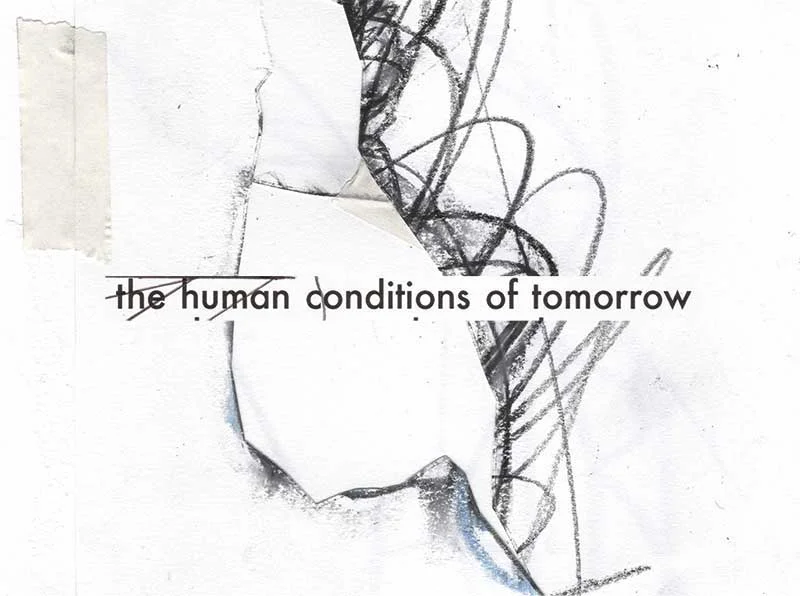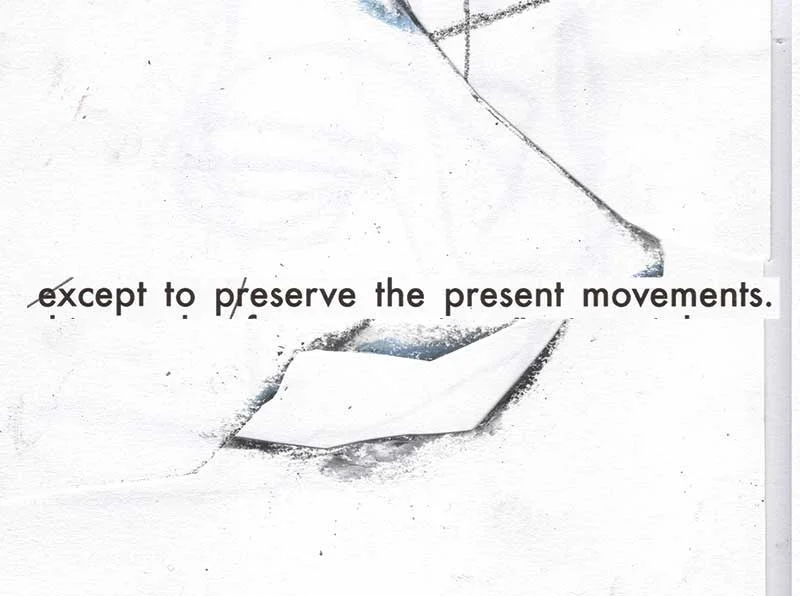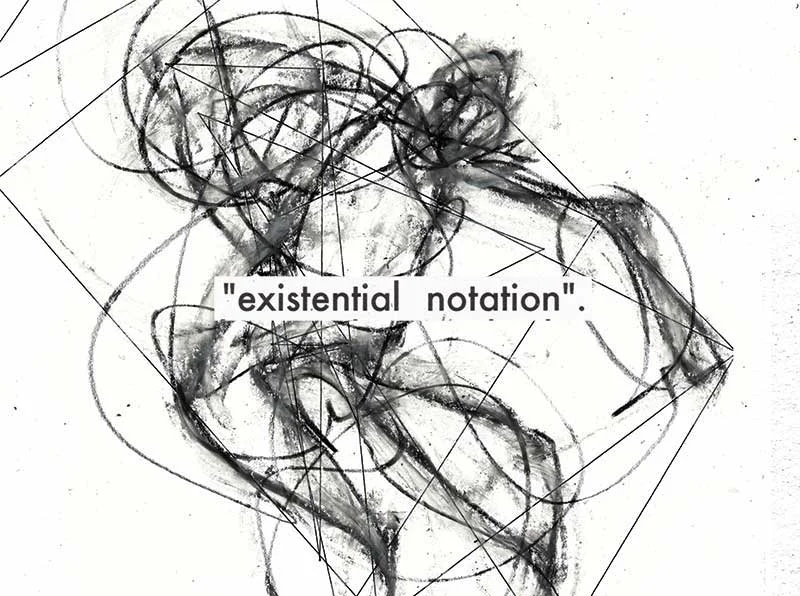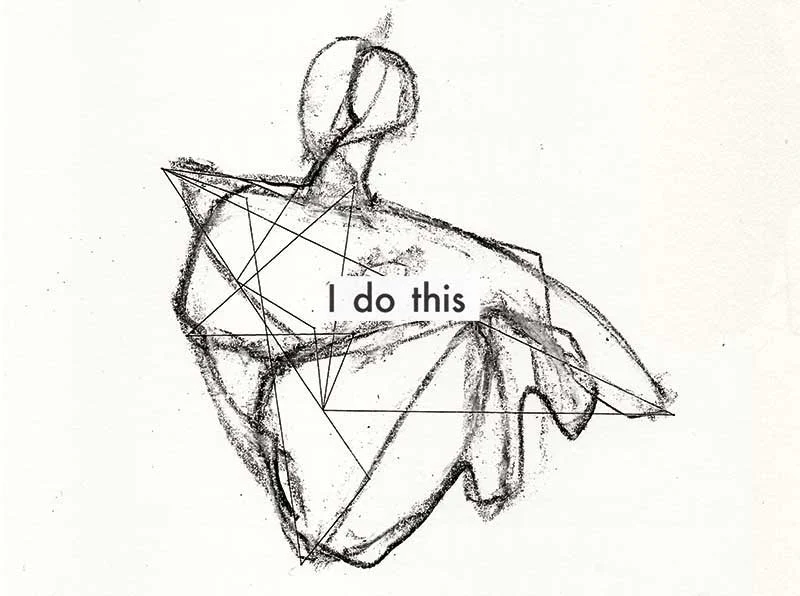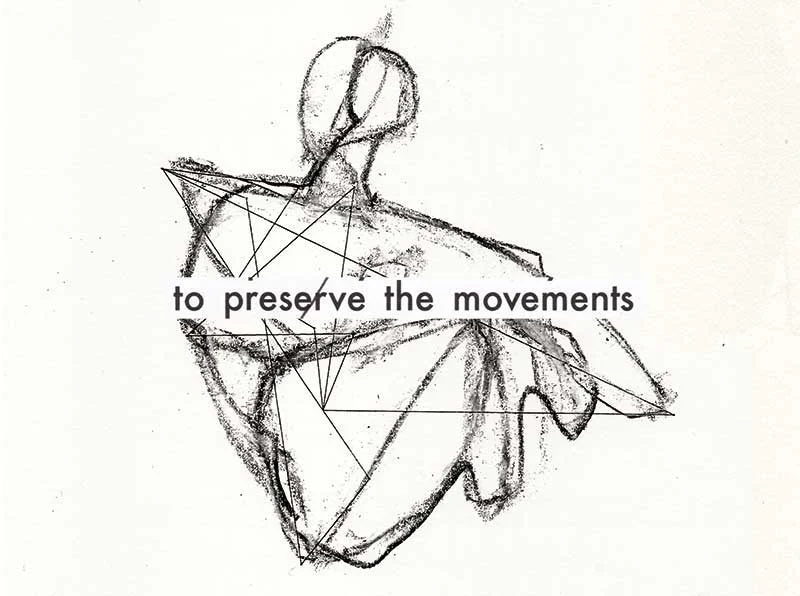10th – 12th Lecture 2016/2017 »Revealing the Machine II«
10th Lecture
»About the Fact of Being Very Fragile«
Someone who gets into the state of being will only be able to identify himself as a Being in the moment of immediacy. It is the moment of immediacy which is constantly decaying.
The question is, is it possible, and if it is so, how can we stay in the moment of immediacy? Not in an eternal state, but in a state which can constantly be redefined, one can say; as own's form of a grammatical structure, as a text that can be re-read over and over again.
Being at itself (Sein) means, being without movement. Movement will inevitably lead to decay. The difference between Being at itself (Sein) and being alive (Dasein) is the difference between what is unbreakable, like a monumental statue suggests, and what is fragile. Also, if it is our desire to be unbreakable, as a matter of fact, we are breakable.
To be yourself means being very fragile.
The elements of decaying are the elements of the ongoing narration of what we are. The elements of any text are identical with the elements of decaying of material substances. The decay reveals the grammatical structure
of what can be always renewed in a substantial sense by reading the text.
„In language, there are only differences. Even more important: a difference generally implies positive terms between which the difference is set up; but in language there are only differences without positive terms.
Whether we take the signified or the signifier, language has neither ideas nor sounds that existed before the linguistic system, but only conceptual and phonic differences that have issued from the system.
The idea or phonic substance that a single sign contains is of less importance than the other signs that surround it. […]“ Ferdinand de Saussure, 1857 – 1913, was a Swiss linguist and semiotician
The fact of being very fragile as human beings and that we and the world around us are interwoven in a constant process of decaying and of recombining the decayed elements is a basic cognizance which has led to the philosophical concept of Deconstruction.
Deconstruction is a philosophical, literary, artistic, musical dissection of the ongoing process which surrounds us. This process is defined by the constant exchange between decay and new-structuring. All in all a process which, seen from the individual lifetime, leads to an irreparable decay. The deconstructive dissection is a method of intellectual understanding as well as the groundwork fornewly-structuring the dissected elements in sense of artistic elaboration.
„What I call deconstruction, of course, is to open up rules, procedures, or techniques, but basically it is not a method or a scientific critique because a method is a technique of questioning or reading without regard for the idiomatic features of the object in other contexts. Deconstruction, on the other hand, deals with texts, with special situations, with the totality of the history of philosophy within which the concept of method has been constituted. If, then, deconstruction questions the history of metaphysics or that of the concept of method, then it cannot simply be a method itself. Deconstruction presupposes the transformation of the concept of text and writing. […] I call an institution as much as a political situation, a body or a dance, "text," which obviously led to many misunderstandings because I was accused of putting the whole world into a book. This is obviously absurd.” Jacques Derrida, 1930 – 2004, French philosopher
The ratio of line, area + movement of an immediate utterance (direct impression): How can the direct impression be sustained without detracting from the immediacy?
In addition there is the question of material; Paper, pen, brush, line strength...
The question of movement, its connection with the figure; a movement coming from the figure or hand is involuntarily going back to the figure (for figurative determination);
And always the effort to avoid any pre-determination. Therefore the use of space-codes and time-codes: Narrative codes: letters in relation to the space.
11th Lecture
»What I call Text is Everything«
Without an understanding of what I was doing, I started working on the machine during my studies. The machine, I am still working on, is based on the grammatical structure of the movements of the body. For the construction, I use all units of measurement with which we measure and note down the physical conditions of our reality: space, time, seconds, minutes, hours, letters, numbers, cardinal points, degrees of latitude, degree of longitude; all derived from the measure of the human body.
The machine collects the parts which are the residues of the process in which the world around us is disintegrating. The aim of the machine is not to save the parts for eternity but to offer a system to re-combine the elements as often as possible. This is only possible if the elements are subsistent, i.e. existing by themselves without any pre-condition.
There is only one thing about we can say that it is existing for itself: It is the short distance (in fact not more than a point) between the Everything and the Nothing.
The recombined elements (consisting only of points and lines) are the grammatical structure which enables us to realize the narration of what we are.
The aim of the machine is to produce a text with which the row of short distances between the Everything and the Nothing is fixed as an existential notation.
„What I call text is everything, is practically anything. It is all, that is, there is a text, as soon as there is a trace, a differential reference from one track to the other. And these references never stop. There are no limits to the differential reference of one track to the other. A trace is neither a presence nor an absence. Consequently, this new concept of the text, which is without boundaries, presupposes that at no time can one find anything outside the sphere of the differential reference, which is a real, a presence, or an absence. […] I thought, it would be necessary to carry out this enlargement, this strategic generalization of the concept of the text, in order to give deconstruction its possibility […].“ Jacques Derrida, 1930 – 2004, was a French philosopher
The machine will notate the grammatical structure of the elements which are the residues of the respective moments disintegrating around us.
To resist the decay we use the system of History (of a nation, an institution, a company, an individual life) by trying to give a perpetual structure to what is happening which shall allow us to make predictions. As a construction to be able to produce a narration without any pre-determination, the machine is also a fundamental proclamation against History in the general understanding.
The decay is neither a highly dramatic act nor irrelevant, but continuously happens with the inner and external world. Sure, it is hard to accept, but it is the primary condition of Being, the precondition of our physical condition as well as of the relation between our body on the one hand and on the other hand, of what we call our soul: emotions, sensitivity, remembrance, perception, awareness and spiritual knowledge.
The work at the text (in the full meaning of the term Text) is a lonely work because we must accept that only in our own decay will we be able to recognize and find the physical and spiritual elements of what we are on your own, to work with them. At the same time it is a collective work because we need someone at whom the re-construction of the elements is aimed.
The re-construction of the elements which are brought forth with the decay process can only be fulfilled within the space between one living being and another. The emotional space which is involuntarily connected with the aim of re-construction, is an elementary part of what we call love (maybe the only sustainable one).
In a material sense the emotional space consists of paint, charcoal, paper, printing ink, sound waves, of what happens on stage, what on screen and so on.
The social category for this is called art: literature, drawing, painting, design, acting, movies, songs, musical compositions and so on.
12th Lecture
»Reflection and Revision«
Reflection and revision are terms deeply connected to art and design and any other kind of artistic language. Reflection means to reveal the rules of the common grammar (i.e. the structure on which any language is based) by the revision of our very personal experiences.
The precondition to getting this grammar(or structure) is to prevent any intellectually predefined meaning. To activate the process of reflection (with it the process of art and design) we need to activate the tools of our sensual knowledge. Therefore I need the machine.
Just by moving my body in your direction, the machine will give me access to the common structure of our being which is to be found in the space between one and the other living being. With a predefined opinion (about whatever) it is not possible to get into this space.
The open space between one and the other living being in which I am able to identify –without any prejudice– the other being as one being with desires, fears and hopes like mine, which we call the space of ethics. You may call this space God or you may be convinced that there are just material conditions but the truth of ethics will not be touched by these definitions.
In practice ethics is the concrete regulation of how to live together without predefined rules and values except the rule that every being owns an inviolable entity by itself.
In our Western culture and in the cultures of the Middle East and the Arabic countries (all cultures which are rooted in the monotheistic religions), ethics is the most important requirement of the daily life. The basis of ethics of these cultures was first written down in Jewish prophecy in the book of Amos around 600 BC.
The space of ethics and the space of art are identical, both are bringing forth the “text of being-alive”.
To keep the “text of being-alive”, we need specific techniques and spaces: a technique of speaking (writing, drawing, painting or whatever) without predefined meanings and a room, the borders of which are set by those bodies who speak to each other.
I am longing to understand how my personal “text of being-alive” is interwoven with history.
I am longing for a sensual knowledge about how I can fill the space between you and me by reading and writing my text. My reading and writing will take place as soon as I have the machine.
In history of Man the synagogue was the first place at which, by reading of the “text of being-alive” –from letter to letter, from point to point–, the breath of life was unfolded from one to another.
Also a theatre-stage could be such a place, a canvas, a piece of music, a book or a work of choreography (and so on) could become such places. The Vitruvian machine will be such a place.
I want to see if and how the “text of being-alive” is really more mighty than any radical religious belief, or the belief in material success, or in any idea of national power.
To get this experience, I have to ask those, who adhere to the “text of being-alive” although they are living in oppression and distress or are constantly surrounded by these.
My longing is deeply connected to the Jewish prophecy of loss: I have to give up everything which I am holding onto. I have to stand naked and with empty hands in front of you to obtain my “text of being-alive”.
To be able to read, to write, to draw, to paint, I have to resist thewill to say something about how things may work.
To find myself in the “text of being-alive”, I have to became Job.
In the course of history, there were many people living in oppression and persecution, often in combination with material distress because of their belief or their race. There's just one people which had accompanied all the nations through all of history and which belonged to the people of the respective nation. At the same time, they are strangers who are often declared to be enemies because of their belief. Enemies which will hollow out the people's body, so they must be expelled or, if it's not possible to get rid of them, to be eliminated in another way. To get the knowledge I am longing for, I have to go to the Jews.





